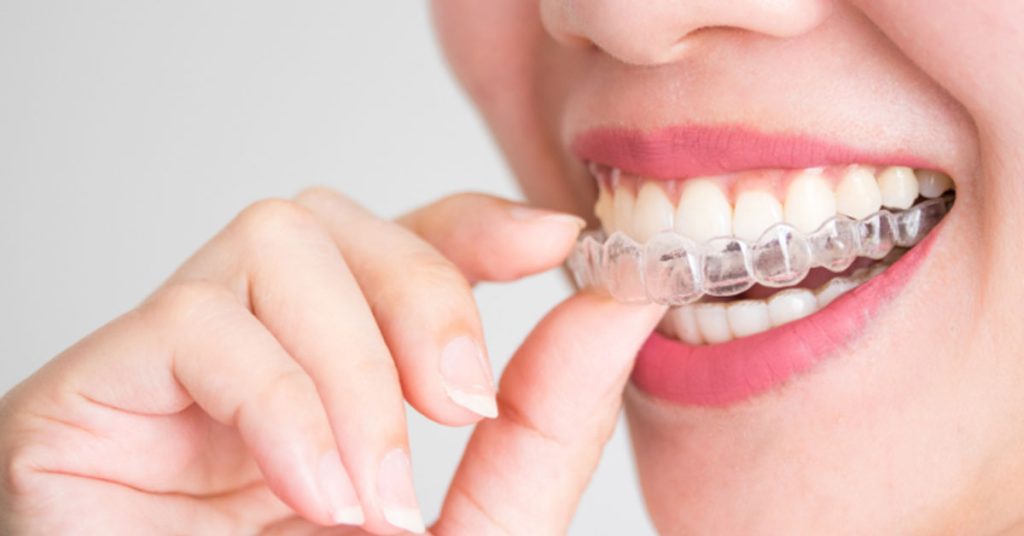The Complete Guide to Invisible Teeth Aligners: Options, Costs, and Considerations
Invisible teeth aligners are a modern, lifestyle-friendly solution for a straighter smile. Whether you’re seeking subtle cosmetic improvements or functional corrections, understanding your options—and working with the right provider—ensures a safe, successful transformation.

What Are Invisible Teeth Aligners?
Invisible aligners are clear, removable plastic trays custom-made to gradually shift teeth into their correct positions. Unlike metal braces, they’re barely noticeable and can be removed for eating, drinking, and oral hygiene.
Key Features:
- Made from BPA-free, medical-grade plastic
- Designed using 3D imaging and treatment mapping
- Worn 20–22 hours daily
- Replaced every 1–2 weeks as treatment progresses
Popular Brands:
Invisalign, ClearCorrect, Byte, Candid, SmileDirectClub
Types of Invisible Aligners
- In-Office Aligners:
Prescribed and monitored by a dental professional, these options include regular check-ups (e.g., Invisalign, ClearCorrect). - At-Home Aligners:
These direct-to-consumer models use impression kits or scans with remote oversight (e.g., Byte, Candid, SmileDirectClub).
How the Treatment Works
- Initial Assessment: Digital scan or impression to assess alignment needs
- Custom Treatment Plan: 3D imaging maps tooth movements over time
- Aligner Fabrication: Series of aligners created for progressive adjustments
- Wearing Schedule: Each aligner worn for 1–2 weeks
- Follow-Up: In-person or virtual monitoring, depending on provider
Duration: 3–18 months, depending on case complexity
What Conditions Can Aligners Treat?
Aligners are effective for mild to moderate issues, including:
- Crowded teeth
- Gaps
- Overbite / Underbite
- Crossbite / Open bite
For severe alignment or jaw issues, traditional braces or a hybrid approach may be better.
Effectiveness and Success Rates
- Aligners are shown to achieve 70–80% of predicted movements
- Compliance (wearing 20–22 hours daily) is key to success
- Clinical oversight improves outcomes
- 94% of patients with mild to moderate issues report satisfaction (AJODO, 2019)
Cost of Invisible Aligners
| Brand | Estimated Cost | Treatment Type |
| Invisalign | $3,000 – $8,000 | In-office |
| ClearCorrect | $2,500 – $5,500 | In-office |
| Candid | $1,895 – $3,500 | Hybrid |
| SmileDirectClub | $1,950 or $89/month | At-home |
| Byte | $1,895 – $2,295 | At-home |
Additional Costs to Consider:
- Initial consultations ($0–$250)
- Retainers post-treatment ($100–$300)
- Replacements and refinements
- Pre-treatment dental work (e.g., fillings, cleaning)
Insurance & Financing:
- Many dental plans cover 25–50% of treatment (lifetime max $1,000–$3,000)
- HSAs, FSAs, payment plans, and CareCredit may apply
Aligners vs. Traditional Braces
| Feature | Invisible Aligners | Traditional Braces |
| Appearance | Clear and discreet | Visible (metal or ceramic) |
| Removability | Yes | No |
| Eating restrictions | None | Many |
| Oral hygiene | Easy brushing/flossing | More difficult |
| Comfort | Generally more comfortable | Can irritate gums/lips |
| Suitability for complex cases | Limited | High |
| Cost | $1,200 – $8,000 | $2,500 – $6,000+ |
Who’s a Good Candidate?
Ideal Candidates:
- Mild to moderate alignment issues
- Good oral health (no active decay or gum disease)
- Adults and teens with full adult dentition
- Willing to follow the 20–22 hour wear schedule
- Prefer a discreet or flexible solution
Less Ideal for:
- Children or those with mixed dentition
- Severe bite issues or jaw misalignments
- Those unlikely to comply with wear guidelines
- Patients with complex dental restorations
How to Choose a Provider
Factors to Consider:
- Level of professional oversight (in-office vs. remote)
- Technology used (3D scanning vs. home impressions)
- Aligner material and design
- Cost transparency and payment flexibility
- Reputation and success stories
- Customer support and emergency policies
Pro Tip: Always start with a consultation or virtual assessment. For complex cases, opt for professional supervision.
The Treatment Timeline (Step-by-Step)
- Consultation: In-office or online to assess candidacy
- Scans/Impressions: Digital or at-home kits
- Treatment Plan: 3D model created
- Aligner Production: Custom trays manufactured
- Wearing Aligners: 20–22 hours daily
- Progress Monitoring: Every 6–8 weeks (in-office or virtual)
- Final Retainer: Worn nightly to maintain results
Final Thoughts
Invisible teeth aligners are a modern, lifestyle-friendly solution for a straighter smile. Whether you’re seeking subtle cosmetic improvements or functional corrections, understanding your options—and working with the right provider—ensures a safe, successful transformation.










